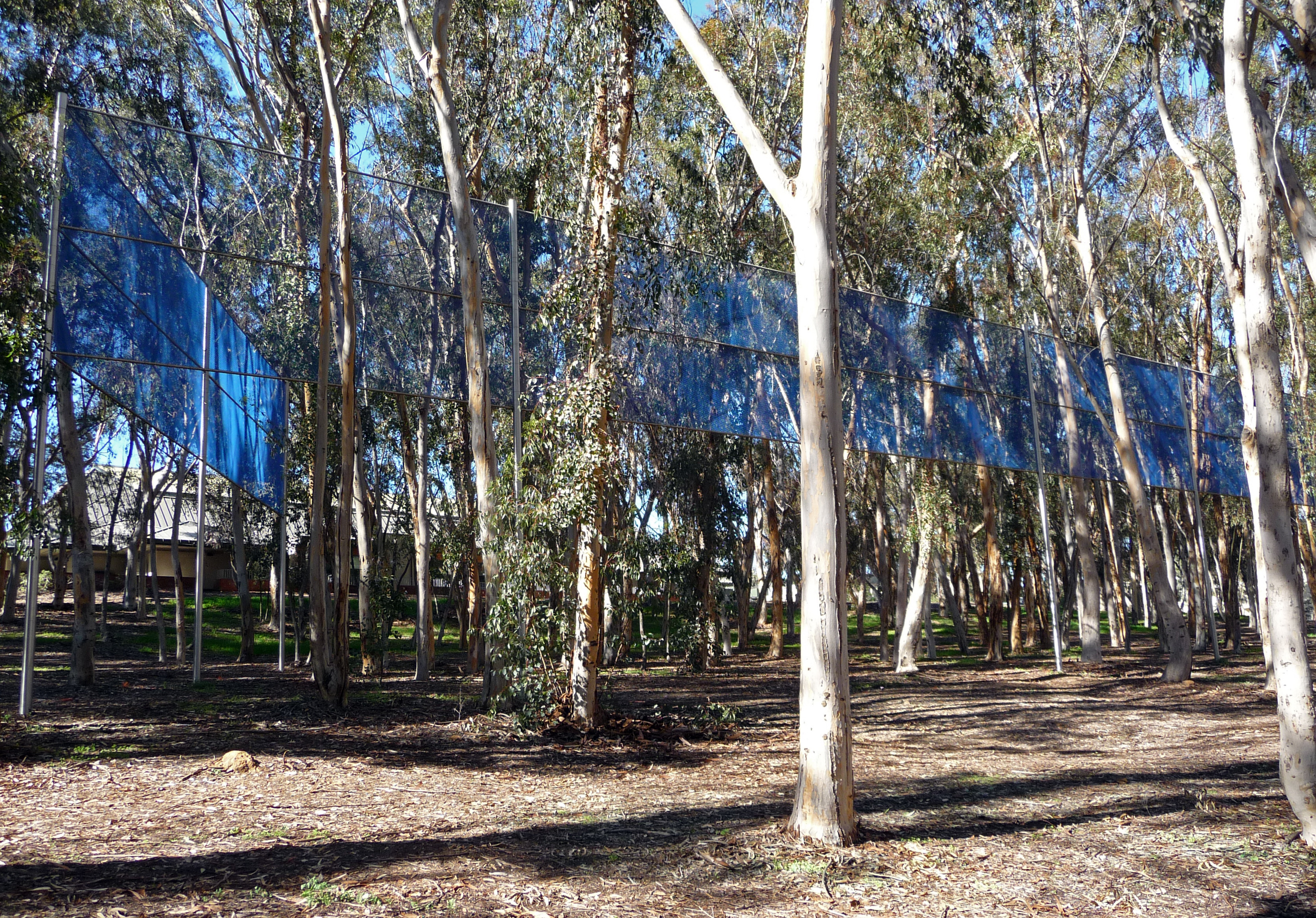
I’ve been thinking a lot about this fruit tree cage that Kelly spotted on the Theordore Payne garden tour this spring (see some more images of that lovely Altadena garden here). Squirrels just stripped our peach tree of every single fruit (though I’ve found that I can still eat the half-gnawed ones I find on the ground). Other options I’ve considered:
- Bird netting. But this stuff is a real pain to work with. And it doesn’t always work. Squirrels are persistent!
- Removing fruit and ripening it indoors. I did this last year with some success, but I was not on top of the situation this year.
- Squirrel stew. I just don’t have the heart for this option.

Robert Irwin, “Two Running Violet V Forms, UCSD” photo by Tktktk – Own work. Licensed under CC BY 3.0 via Wikimedia Commons.
How do you deal with the squirrel/fruit tree menace?

